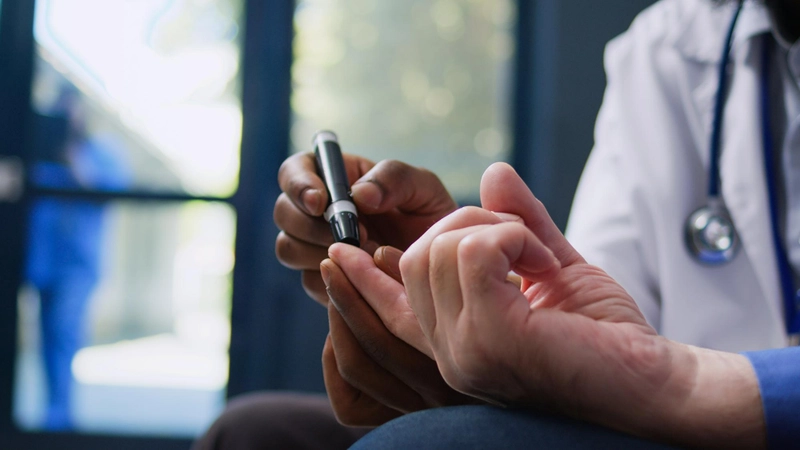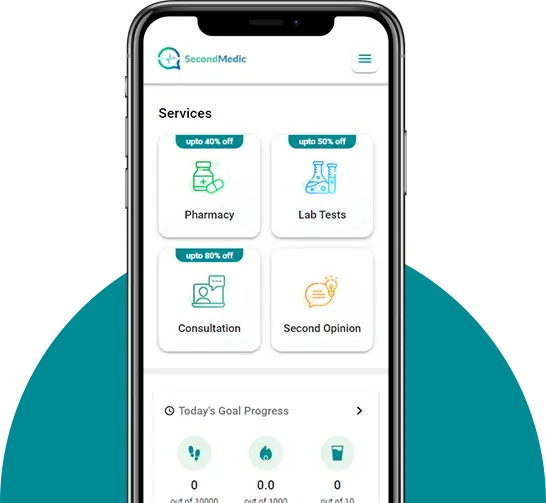- Published on: Oct 25, 2024
- 5 minute read
- By: SecondMedic Expert
Symptoms Of An E. Coli Infection You Shouldn’t Ignore: Get Diagnosed At Second Medic
E. coli, short for Escherichia coli, is a bacterial group commonly found in our intestines and in some animals. While many E. coli strains are harmless and even beneficial, certain types can cause serious infections. Knowing the symptoms of an E. coli infection and when to seek a diagnosis can help prevent complications, especially if you catch the infection early. Here, we’ll dive into the early signs of E. coli infection, ways to test for it, and how Second Medic offers top-quality E. coli diagnostic services to help you stay healthy.
Understanding E. coli: What is it?
Escherichia coli is naturally present in human and animal intestines, and it plays a vital role in digestion. However, some strains, like E. coli O157 produce toxins that cause infections and lead to symptoms ranging from mild discomfort to severe gastrointestinal issues. E. coli infections often result from consuming contaminated food or water or through direct contact with animals or people carrying the bacteria.
Early Symptoms of E. coli Infection: What to Watch For
The initial signs of an E. coli infection can appear within 1 to 10 days after exposure, with most cases surfacing around 3 to 4 days post-infection. Recognizing these early symptoms of E. coli is essential, as timely intervention can prevent escalation.
Common Early Symptoms of E. coli Infection:
-
Abdominal cramps: One of the first signs is intense stomach cramping. Unlike regular stomach pain, the cramps associated with an E. coli infection are usually sharp and persistent.
-
Diarrhoea: Initially, diarrhoea may be mild, but it can quickly become severe and even bloody as the infection progresses. In many cases, E. coli can cause bloody diarrhoea, indicating a more severe strain.
-
Nausea and vomiting: Nausea is common, with some individuals experiencing vomiting due to the bacterial toxins irritating the digestive system.
-
Fatigue: Constant discomfort from symptoms like stomach cramps, diarrhoea, and nausea can lead to fatigue and weakness.
-
Loss of appetite: Many people with an E. coli infection report a decreased desire to eat, which can contribute to further weakness.
If these symptoms sound familiar or have been persistent, especially if you suspect exposure to contaminated food or water, it’s crucial to consider E. coli testing. Early detection through accurate diagnosis is vital to prevent severe complications.
Signs of E. coli Infection in Adults
Symptoms of E. coli infection in adults are similar to those in children but can sometimes go unnoticed or be mistaken for other gastrointestinal issues. Adults may not realize the severity of the infection until it worsens, so being aware of E. coli infection symptoms can help prevent unnecessary suffering. Key signs to watch for include:
-
Persistent abdominal cramps and pain: E. coli stomach pain symptoms tend to be sharp and do not ease with time, unlike common stomachaches.
-
Bloody diarrhoea: As mentioned, bloody stools are a red flag that you might be dealing with a severe strain of E. coli.
-
Increased dehydration: Persistent diarrhoea can lead to dehydration, marked by dry mouth, dizziness, and reduced urine output.
-
High fever: Although less common, fever can occur in some cases and may signal the body’s response to infection.
When to Get Tested for E. coli
So, when should you seek professional help? If you’re experiencing persistent symptoms or if you suspect recent exposure to contaminated food or water, it’s best to get tested. Testing is particularly important if:
-
Symptoms persist beyond a few days
-
You notice blood in your stool
-
You experience severe abdominal cramps and dehydration
-
Someone in your household has recently been diagnosed with an E. coli infection
Ignoring these symptoms or delaying diagnosis can lead to severe complications, such as hemolytic uremic syndrome (HUS), which affects kidney function. Early testing is the best way to prevent the infection from worsening.
How to Get Tested for E. coli at Second Medic
At Second Medic, we offer reliable E. coli diagnostic services tailored to your needs. Our E. coli testing services are straightforward and highly accurate, providing peace of mind for individuals concerned about infection. Here’s what you can expect from our Second Medic E. coli diagnosis process:
-
Sample collection: A stool sample is typically required for E. coli testing. Our diagnostic team will provide you with clear instructions on how to collect the sample safely and hygienically.
-
Laboratory analysis: Our advanced laboratory facilities are equipped to detect E. coli strains efficiently. Testing for harmful strains, such as E. coli O157
, helps ensure accurate results. -
Consultation and follow-up: Following your test results, our medical experts will discuss your results with you, explain any findings, and recommend a treatment plan if needed.
Our E. coli testing services are thorough and designed to provide fast and reliable results, so you’re not left waiting for answers.
What Sets Second Medic Apart for E. coli Diagnosis
Choosing a Second Medic for an E. coli diagnosis means choosing expertise, precision, and compassionate care. Our team of highly skilled professionals ensures that you receive accurate, timely results and personalized care based on your needs. Here’s why Second Medic is your best choice for E. coli testing:
-
Experienced medical team: Our healthcare professionals are experienced in diagnosing and managing E. coli infections, providing you with effective treatment guidance.
-
Cutting-edge diagnostic tools: Our laboratories use state-of-the-art equipment for prompt and precise testing.
-
Patient-centred approach: We prioritize your well-being by providing support and guidance throughout the testing process, making the experience comfortable and reassuring.
With Second Medic’s expert care, you can feel confident in knowing you’re in safe hands, receiving the best possible diagnosis and advice.
Can E. coli Cause Bloody Diarrhea?
Yes, E. coli can cause bloody diarrhoea, especially in cases involving more severe strains. The Shiga toxin-producing E. coli (STEC) is particularly dangerous and often results in bloody stools, severe abdominal cramps, and vomiting. If you observe bloody diarrhoea, it’s essential to seek immediate medical help. Blood in the stool can indicate a severe infection that might require urgent intervention.
Prevention Tips: How to Avoid an E. coli Infection
Prevention is always better than cure, and there are several ways to reduce your risk of contracting E. coli:
-
Practice proper food hygiene: Ensure all foods, especially meats, are thoroughly cooked, and avoid consuming unpasteurized dairy products.
-
Wash hands regularly: Wash your hands after handling raw meat, using the restroom, and interacting with animals.
-
Avoid cross-contamination: Use separate cutting boards for raw meats and vegetables, and always clean surfaces after food prep.
-
Be cautious with water sources: Drink treated water, especially when travelling, and avoid swallowing water from lakes, pools, or untreated sources.
Symptoms of E. coli Infection You Shouldn’t Ignore
To recap, E. coli infection symptoms can range from mild to severe and may progress quickly if untreated. Watch out for early symptoms of E. coli such as intense abdominal cramps, bloody diarrhoea, nausea, and vomiting. These symptoms are more than discomfort; they can signal a serious infection requiring prompt attention.
At Second Medic, our priority is your health, and we’re here to provide comprehensive E. coli diagnostic services to ensure you get the care you need.
Get Tested Today
If you’re experiencing any symptoms of E. coli infection, don’t wait. Schedule a test with Second Medic to receive a reliable diagnosis and peace of mind. Our team of experts is ready to support you every step of the way, ensuring you get fast, accurate results and the guidance you need for a safe recovery.
Read FAQs
A. Symptoms of an E. coli infection typically appear within 1 to 10 days after exposure, with most cases developing symptoms around 3 to 4 days. However, this can vary depending on the strain and the individual’s immune response.
A. Yes, E. coli infections can range from mild to severe. While some cases resolve on their own, others, especially those involving strains like E. coli O157, can cause serious complications, including dehydration and kidney problems, particularly in children, older adults, and those with compromised immune systems.
A. You can reduce the risk of E. coli infection by practicing good hygiene, thoroughly cooking meats, avoiding unpasteurized dairy products, and washing hands regularly. When traveling or in places with limited clean water, drinking treated or bottled water is also advisable.










